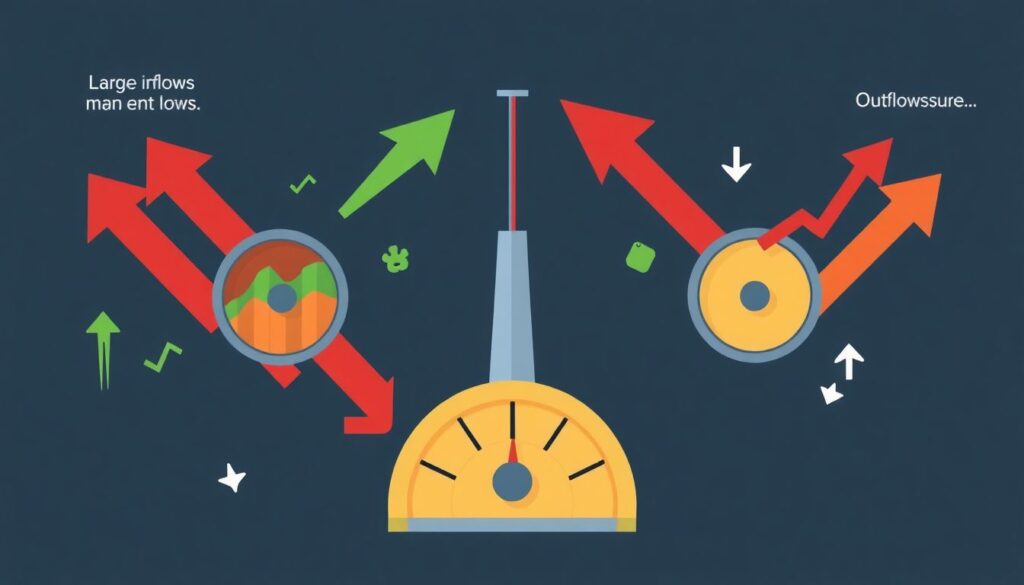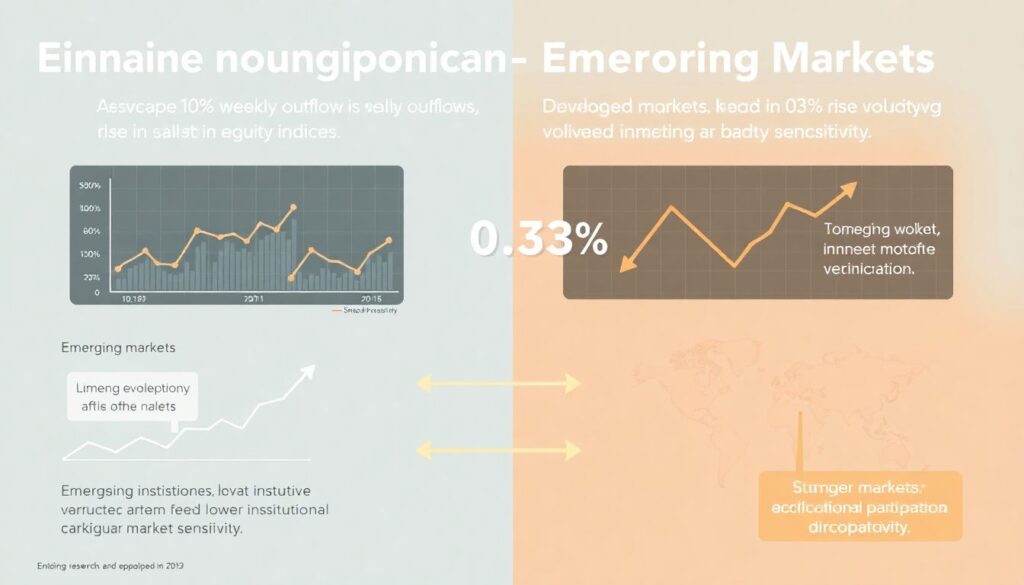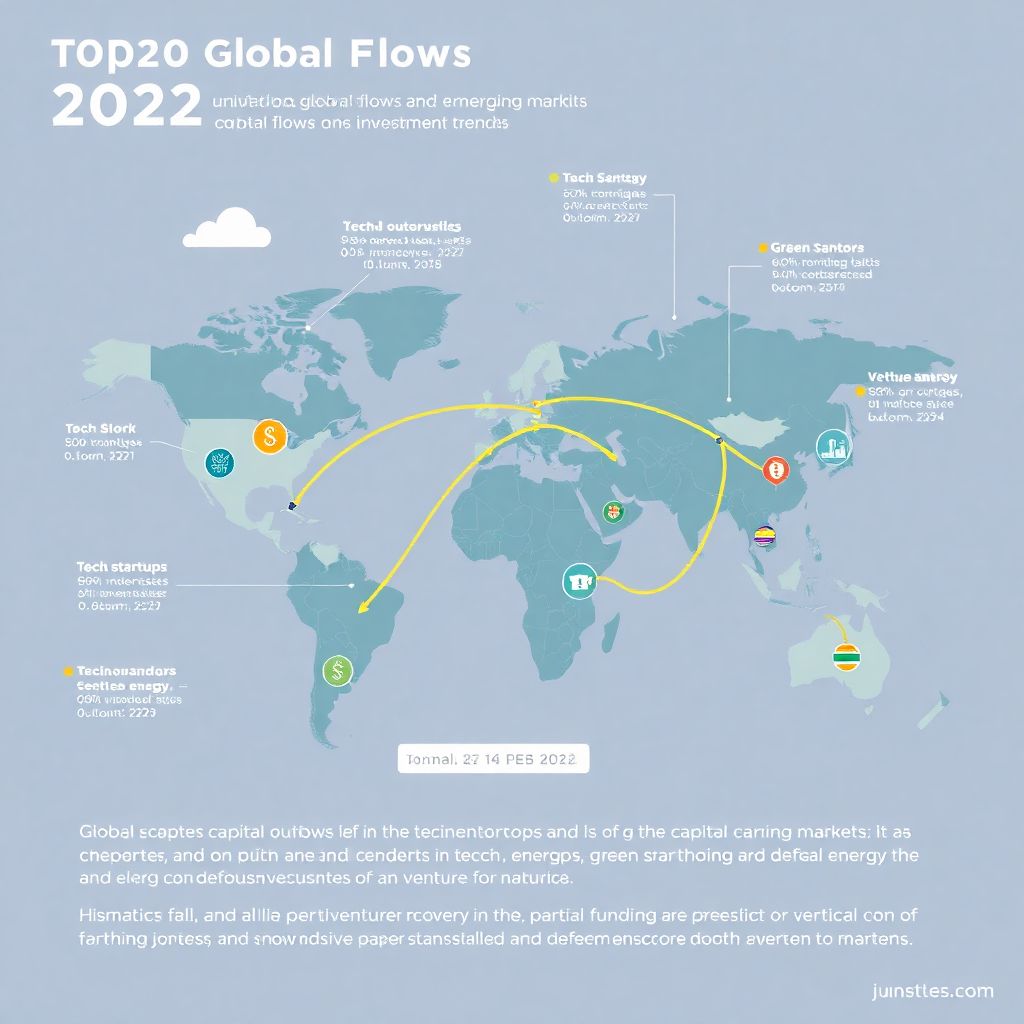Understanding the Pulse: Why Funding Flows Matter
In financial markets, money doesn’t just talk—it moves. Funding flows, or the movement of capital into and out of markets, serve as a powerful indicator of investor sentiment and broader economic trends. Whether it’s billions pouring into tech startups or capital flight from emerging markets, these flows shape pricing, volatility, and market structure in profound ways. Over the past three years, particularly amid post-pandemic recovery, geopolitical shifts, and inflationary pressure, funding patterns have revealed a complex relationship between investor behavior and market performance.
Global Capital Flows: The Big Picture from 2022 to 2024
Between 2022 and 2024, global funding flows experienced notable turbulence. According to the Institute of International Finance (IIF), net capital flows to emerging markets dropped from $1.1 trillion in 2022 to $860 billion in 2023, before slightly recovering to $940 billion in 2024. Much of this volatility was driven by aggressive monetary tightening in the U.S. and Europe, which made developed market assets more attractive and pulled capital away from riskier markets.
In contrast, private equity and venture capital funding in developed economies saw a dramatic contraction. Crunchbase reports that global VC funding fell from $643 billion in 2021 to just $285 billion in 2023—more than a 55% decline—before stabilizing at around $310 billion in 2024. This contraction had a ripple effect on tech valuations, innovation cycles, and IPO timelines.
Technical Snapshot: How Flows Impact Prices

When large fund inflows hit a sector or asset class, the immediate effect is increased buying pressure, which typically drives prices up. Conversely, outflows usually lead to selling pressure and declining prices. This is particularly visible in ETFs and mutual funds, where net flows serve as a barometer of investor confidence.
Formula Insight:
_Price impact ≈ (Net Flow / Market Cap) × Multiplier_
For example, in 2023, the SPDR S&P 500 ETF Trust (SPY) saw net inflows of over $40 billion during the first half of the year. This corresponded with a 12% rise in the S&P 500 index during the same period, highlighting the strong correlation between capital movement and asset performance. However, causation isn’t always linear—macroeconomic data, earnings, and investor expectations also play crucial roles.
Case Study: The AI Boom and Sectoral Capital Rotation

One of the most striking examples of funding flows influencing market dynamics was the AI-driven capital rotation in 2023. Following the breakout success of generative AI platforms, investors redirected massive amounts of capital into semiconductors and cloud infrastructure companies.
NVIDIA, for instance, saw its market value triple between January and December 2023, as institutional investors funneled over $15 billion into AI-focused ETFs. Meanwhile, capital drained from traditional energy and utility sectors, which underperformed the S&P 500 by more than 8%. The rotation wasn’t just speculative—it reflected a structural shift in belief about future cash flows, productivity, and technological leadership.
Liquidity, Volatility, and the Feedback Loop
Liquidity—the ease with which assets can be bought or sold without significantly affecting prices—is closely tied to funding flows. In periods of strong inflows, markets tend to be more liquid and less volatile. However, when outflows dominate, bid-ask spreads widen, and volatility spikes.
This feedback loop was evident in the bond market in 2022, when the Federal Reserve began its aggressive rate hikes. Bond ETFs like TLT (iShares 20+ Year Treasury Bond ETF) experienced weekly outflows exceeding $1.2 billion, contributing to a 30% price drop that year. The decline in liquidity created a self-reinforcing cycle: as prices fell, more investors sold, exacerbating the downturn.
Technical Insight: Volatility and Flow Correlation

Research from the Bank for International Settlements (2023) shows that a 1% increase in weekly outflows corresponds to a 0.3% rise in realized volatility for equity indices. This correlation is even stronger in emerging markets, where institutional participation is lower and markets are more sensitive to sudden liquidity shifts.
Policy and Macro Factors: Invisible Forces Behind the Flows
Monetary policy decisions are arguably the most influential drivers of global capital flows. As central banks hike or cut interest rates, they alter the risk-reward profile of different asset classes. The 2022–2023 tightening cycle, led by the Fed’s increase of the federal funds rate from 0.25% to 5.25%, triggered a reallocation of capital from growth stocks and risk assets to bonds and money market funds.
Money market funds, for example, saw over $1.1 trillion in net inflows from early 2022 to late 2024, according to data from the Investment Company Institute (ICI). These funds offered yields above 5%—a significant turnaround from near-zero rates in the previous decade—making them highly attractive in a risk-off environment.
Looking Forward: What to Watch in 2025
As we enter 2025, several trends are set to shape the future of funding flows. First, the anticipated easing of monetary policy may reignite appetite for risk, driving capital back into equities, particularly in tech and green energy sectors. Second, geopolitical tensions—especially in Eastern Europe and East Asia—will continue to influence flows into commodities and defense-related industries.
Moreover, the growing influence of sovereign wealth funds and passive investing vehicles is shifting how capital moves. BlackRock and Vanguard now manage over $18 trillion combined, and their allocation decisions can sway markets almost instantly.
Conclusion: Capital as a Compass
Funding flows aren’t just numbers on a spreadsheet—they reveal the collective psychology of global investors and the structural forces driving markets. By analyzing where the money is going—and where it’s leaving—we gain critical foresight into future price trends, sector leadership, and systemic vulnerabilities.
In a world of increasing complexity, from AI disruption to climate finance and digital currencies, understanding funding flows is no longer optional. It’s essential for anyone serious about navigating market dynamics in 2025 and beyond.

